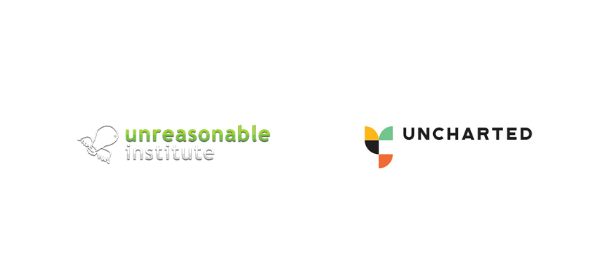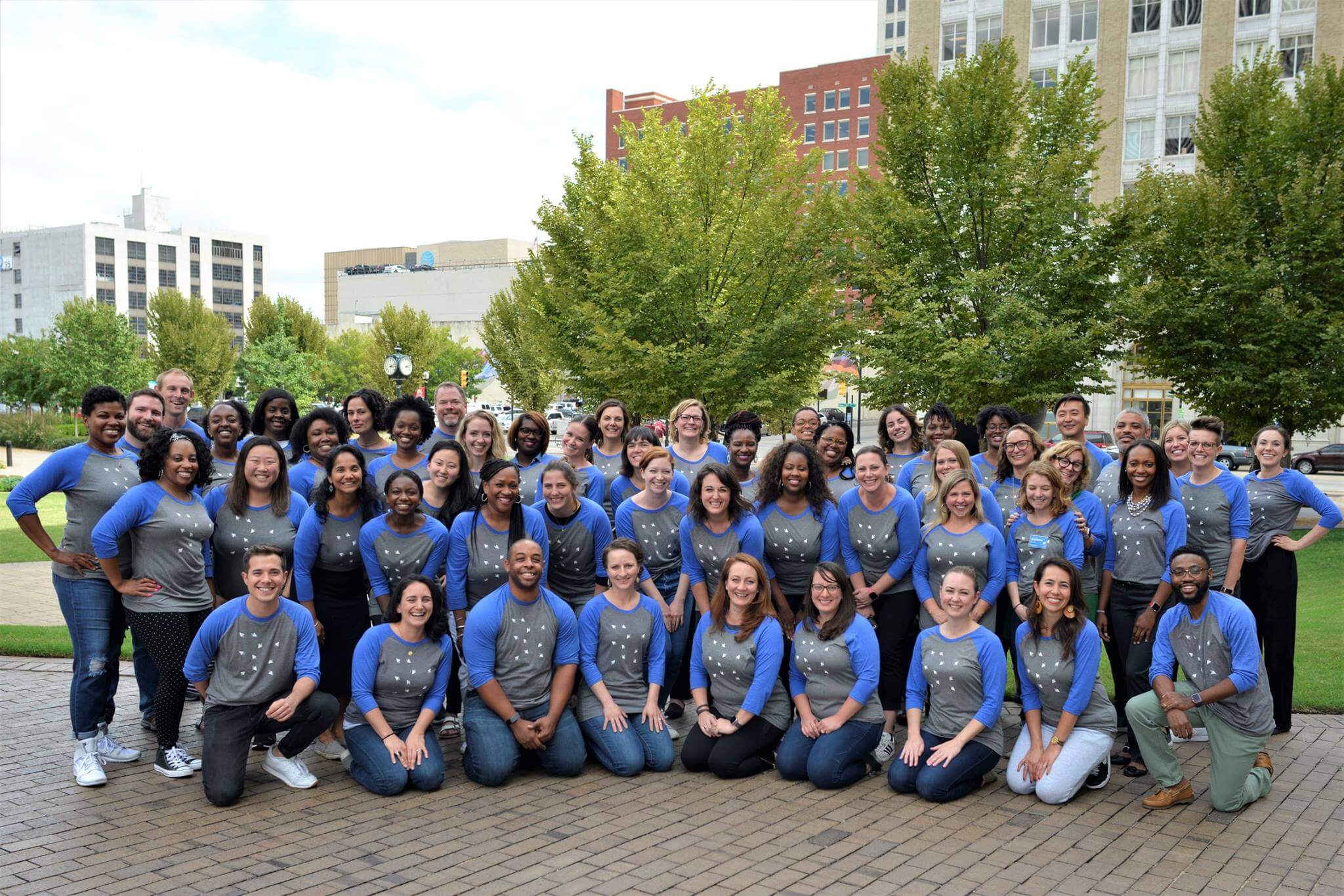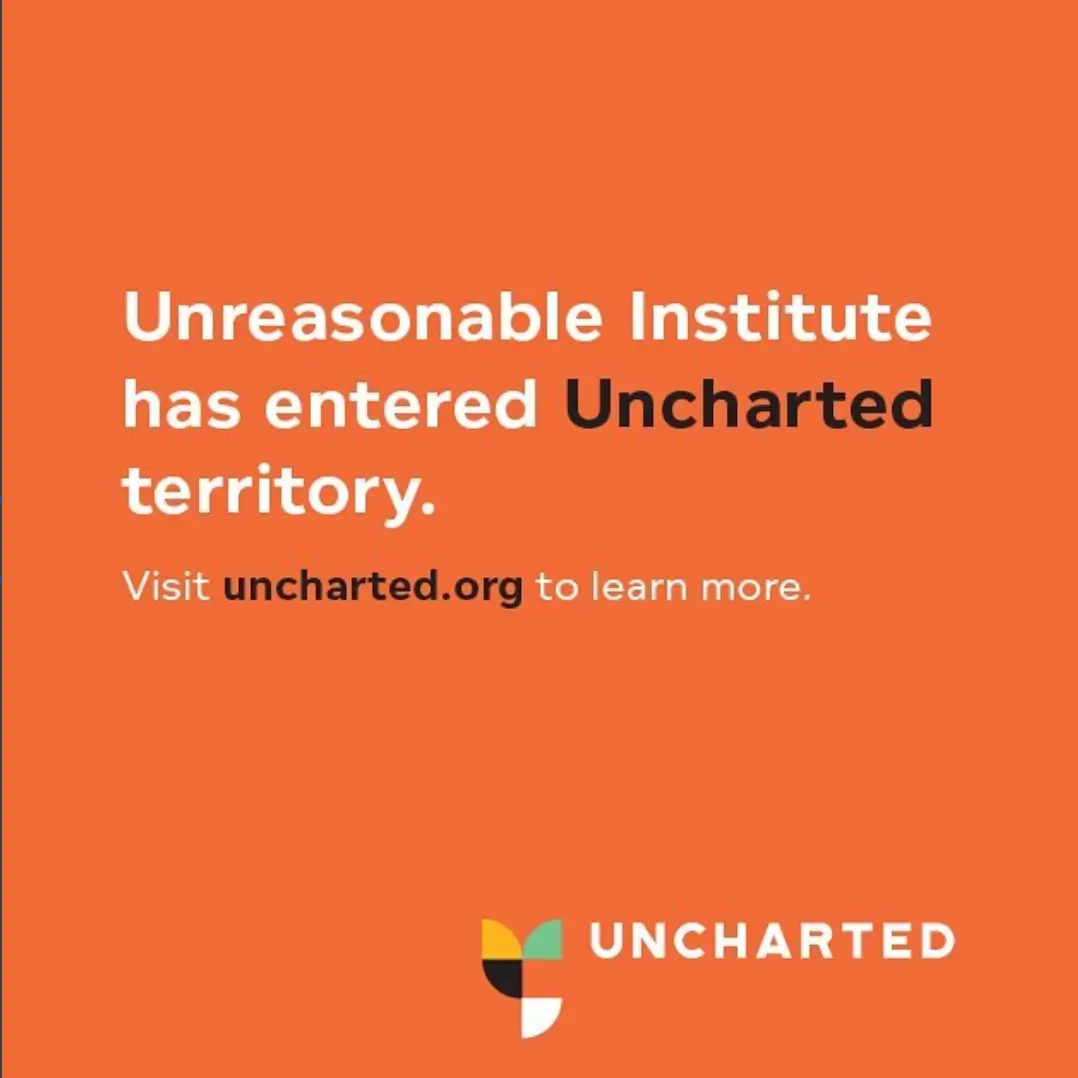The night before her organization unveiled its rebrand, Laura Schwecherl, then Director of Marketing and Communications for what is now Uncharted, sat at her computer, hitting refresh. Again and again, she reloaded the organization’s website, waiting for the organization’s former URL to redirect to its new one. For Unreasonable Institute to officially—publicly—become Uncharted.

The Uncharted team had spent months getting ready for this moment. The team formerly known as Unreasonable had gone into a cocoon, gone through a rigorous renaming and branding process, and emerged anew. Internally, after some early trepidation, they had all come to love the new identity.
But how would their other stakeholders—many of whom were extremely invested in the organization’s existing brand—feel about it? What if after all their hard work developing the new brand, it was met with ambivalence? Or, worse, disapproval?
These were the kinds of questions that were running through Laura’s mind as she hit refresh. Again and again. And again.
Having led the rebrand process countless times, we get where the anxiety comes from. A rebrand—especially one involving a rename—is a huge undertaking. It’s natural to want the “ta da!” moment to be a resounding success. To want your new brand to be enthusiastically embraced—proof positive that your hard work has paid off.
And what’s the best way to ensure the big reveal is a success? By doing the rebrand right, then having an effective rollout strategy.
Read on for our pointers for a kick-ass brand rollout—and to learn how Uncharted’s went.
Treat it like a project

Think of a brand rollout as its own project—because it is. And, as with any project, you need to establish a budget, develop a timeline and allocate the proper resources. Collaborate with an agency that specializes in branding with a focus on brand rollout and activation strategy. A high level of thought partnership and experience behind this work will yield an exponential return on the investment you’re making in your brand.
The more methodically you approach the rollout, the more control you will have over the adoption and success of the new brand.
In the case of Uncharted, Laura had come on board mid-rebrand. She was told by the organization’s CEO that she would be working on the rebrand and rollout exclusively for a few months—but she was surprised at how much time it actually took.
Making sure you have the resources to properly roll out your new brand is a must—and is something best considered in the early stages of your rebrand process, not immediately before take-off.
Get internal buy-in and create brand champions

The Team at Leading Educators wearing their new t-shirts after their brand launch.
A common mistake with a rollout is selling the new brand to external stakeholders and audiences while telling internal stakeholders about the new brand. Making sure your staff and internal stakeholders are in support of and engaged with your new brand is critical to ensuring that your customers, donors and other external audiences will embrace your new identity as well.
When you create excitement among staff, you are creating your most powerful ambassadors. This starts by looping them into the rebrand early on in the process.
Identify critical junctures in the rebranding process (such as discovery, thematic exploration, etc.) where staff input will yield the most value. This input will lend an important perspective to the process—and, even more importantly, when it comes time to unveil the new brand to internal stakeholders, it won’t come as a shock. Members of your team will feel as though their voices have been heard and have a sense of pride and ownership in the new brand.
Once the rebranding process is complete, internal education for the wider team—particularly for staff that may not have been directly consulted—is critical.
You’ll want to ensure that all employees understand the story behind the new brand—and are equipped and empowered to bring it to life across any medium.
For Uncharted, involving staff in the process was second nature. But they had another stakeholder group to consider—one that wasn’t exactly internal, but also didn’t feel external. Their extremely invested cohort of mentors, past participants, and other partners needed to be in the loop. For them, hearing about the new brand with the rest of the world wasn’t going to be good enough—and would be a missed opportunity to recruit some early brand champions.
So Uncharted brought them in early.
Laura explains: “We kind of thought of our stakeholders in terms of concentric circles—from our inner circle outwards. So what we did was we went through like our whole list of stakeholders manually, which was a lot of work and kind of figured out who was in our inner circle. So we kind of came up with a cadence of messaging so that the day that we actually updated our website, we had a ton of people in our inner circle who already knew who could help us share this story. So we sent out a teaser email a few weeks before, saying, basically, ‘Something exciting is happening. Stay tuned…’ and then about a week out we shared more—like, our logo and the new story, all that. And FAQs that covered every question and scenario we could think of, so people knew what to say if questions were asked.”
“And we set them up with basically a kit that they could use to help share it all when the time came—social media assets, a link to our new website (which obviously didn’t work yet). And then on the day of the announcement, we also sent personal messages saying, ‘Today’s the day. Can you help us share the good news?’ That kind of thing.”
With 400 or so people on their ‘inner circle’ list, when it was go time, Uncharted had lots of extra help disseminating their story.
Which brings us to our next point…
Tell your story and manage public perception

As part of the rebranding process, you should have identified your external stakeholders and audience profiles. For each of your stakeholder and audience groups, you’ll want to develop specific messaging and identify the most effective communication channels to reach them. Chances are, there’s no single channel to communicate with everyone you need to reach.
One of the most critical factors here is avoiding leaks! Take the necessary steps to ensure all information about the new brand is locked down until the official reveal. Again, the more you can control the flow of communication, the more influence you will have on the successful adoption of the new brand.
Trust us—you want to be able to tell the brand’s story and evoke specific feelings before the public takes control and tells a story of their own (a big contributor to The Gap’s $100million fail!)
The order and method in which the new brand is unveiled can be leveraged to create excitement, gain media attention, and attract new customers.
However, done incorrectly (or not at all), you risk causing confusion and isolating external stakeholders and audiences.
Make a list, check it twice

An established brand has lots of touchpoints—so many, in fact, that it’s easy to forget some of them.
Once the new brand is out in the world, you want consistency across every touchpoint, every single time. You don’t want someone to visit Elephant (a favorite stand-in name we use while we’re in the midst of a rename) and make a donation, only to receive a thank you message from Giraffe. Giraffe? Who is that, and when and why did I give them money?
In other words, when the new brand has been unveiled, it’s out with the old, in with the new.
Elect a person or group to conduct a full audit of the brand’s touchpoints and create a checklist of items that need to be updated with the new identity.
In Uncharted’s case, that person was Laura—and was surprised by the number of places the organization’s old brand appeared—especially their logo. “Our footprint on the internet is pretty big—so finding it all was massive. Every time you were confident you’d thought of everything, there was something else.”
Replacing every piece of brand collateral can be labor-intensive—and expensive. The time frame in which you replace brand collateral may vary depending on:
-
1
The nature of your organization – Larger organizations and/or organizations with more branded collateral in circulation may choose to stagger the replacements to space out costs.
-
2
The nature of the rebrand – If a rebrand is subtle, an organization may choose to slowly replace collateral. However, more drastic rebrands (name, logo & color changes, etc.) require a more swift collateral replacement, in order to avoid confusing your audience.
Just remember: while you may choose to space it out for budget’s sake, the faster the old brand disappears, the faster people will adopt the new one.
Maintain, maintain, maintain!

Once the core phases of a rollout are complete, it’s essential that you establish a maintenance plan to ensure the long-term success of your brand. We’ve seen organizations invest in great brand strategies, then only a few months down the road their communications are nearly void of the brand’s distinct identity.
Every off-brand communication is a missed opportunity to build trust, recognition, and loyalty with its audience.
Just as you would have a digital agency update and maintain your website after its launch, have your branding agency monitor the new brand for six to 12 months after it has been rolled out. The agency will establish goals and metrics to measure areas such as communications, collateral application, and audience perception.
Your brand is a living, breathing entity – the more you nurture it, the greater results it will yield. As a brand agency, we can help with that—as we did for Uncharted!
Uncharted’s Big Moment

Source: instagram/thisisuncharted
And now back to Colorado, to Laura and her computer.
With some coaching from Briteweb, she had developed and was in the process of implementing a detailed rollout plan, which included all of the above, and more. She knew in her heart that she’d done everything she could. But it was still a nerve-racking moment for her and the rest of the Uncharted team.
Finally, the moment came, and Unreasonable’s URL redirected to uncharted.org.
“My heart dropped,” says Laura. “Like, this is it!”
That night, Laura and her colleagues didn’t sleep. “We didn’t want to go to bed! Then the next morning we picked up a cake—with our new brand, of course—and that was when the email was going out to our subscriber base.”
“And then we started seeing these responses pouring in. We were worried that people were going to be confused, or upset, because the Unreasonable brand was so loved. But everyone was so enthused. The validation was so nice – like, people get it. So then it was time to celebrate.”
That? That’s the sound of a brand rollout done right.
Is it time for you to rebrand too? Reach out to learn more about our brand strategy process, from discovery to brand rollout. And to learn more about our collaboration with Uncharted, check out this Q&A with the client.
More branding insights
Insights
What are brand guidelines, and why does your organization need them?
It’s fundamental psychology: consistency breeds familiarity, and familiarity breeds trust. And what’s more important to social impact organization than trust?
Insights
How to Choose ADA Compliant Colors
There are a number of factors that come into play when we start talking about ADA (American Disabilities Act) website compliance.
Insights
Developing a Brand Personality for Your Organization
An organization’s brand personality is how the organization looks, how it acts, and how it makes people feel.


